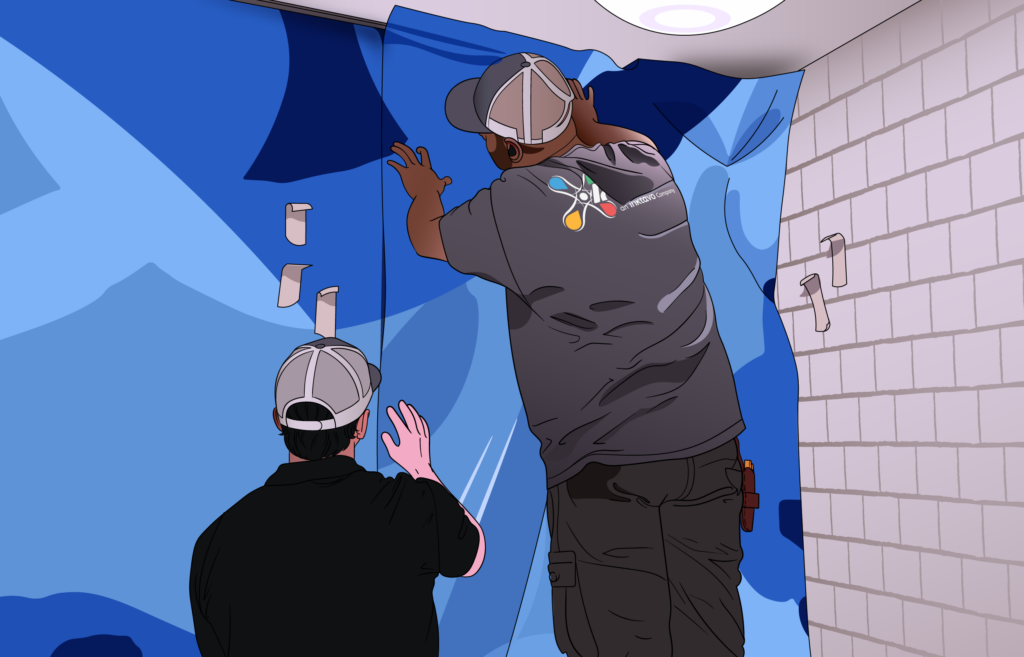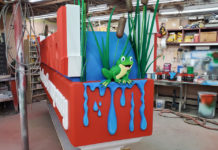Building a sustainable and profitable shop is both challenging and rewarding. Before launching a sign and graphics business, it’s important to know there are many ways to begin. So let’s dive in.
In the Behind the Signs community, someone recently asked how to get started in the graphics business. Their three main questions were:
- How do I get training?
- How do I find suppliers and wholesale vendors?
- What type of projects should I start with?
These questions are common for both beginners and those who have been in the industry for a while. They remain important as your business grows and your needs change.
Receiving Training
It’s surprising there aren’t many educational paths for the sign industry. While there are trade schools for welding, electrical work and construction, there’s not much available for a career in signage and graphics.
If I could advise my younger self on preparing to open a shop, I would suggest taking a couple of small business classes at a local community college, or at least getting online training through the Small Business Association (SBA). First, a basic accounting class to understand the financials because knowing your numbers is crucial for success. Second, a marketing class to learn strategies for how to reach your target market, which is likely your local community.
Additionally, I highly recommend joining the International Sign Association (ISA) and your local state or regional sign association. Sign associations offer training classes and webinars, mentoring programs as well as certification training. For example, both the Texas Sign Association and the Mid-South Sign Association often host seminars on topics like 3M Certified Graphics Installation, Crane Operators Certification and ADA Signage Programming.

These associations also host expos on both national and regional levels. The educational opportunities at these shows are worth the price of admission. There are training classes on design software like GraphicsFlow and FlexiSign, project management software like SignTracker and Clarity, and online selling tools like Inksoft, as well as technical training for running printers, wrapping vehicles, routing signs and operating bucket trucks. There are also specialized training groups that participate in these shows—organizations like Make It Happen Signage Academy and Wrap Academy to name a few.
Attending sign shows is essential for finding educational opportunities for you and your team, and many of these shows are held in interesting places, so you can make a family trip out of it.
Finding Suppliers and Wholesale Vendors
Much like educational opportunities, joining sign associations can help you connect with suppliers and vendors. Networking at expos and seminars is a great way to build relationships and find reliable sources for your materials and equipment. Subscribing to industry magazines, like the one you’re reading now, will help you stay updated on industry trends, the latest equipment and technology and other valuable resources.
Being part of an online community also helps in finding reliable suppliers and vendors. The Behind the Signs Facebook community is a great place to ask for referrals. Many shop owners ask about where to get specific materials like vinyl or substrates, or who can fabricate a sign for a specialized project, and the community is always ready to help.
Choosing Initial Projects
Now that we have covered training and resources, let’s talk about starting and growing your business. Begin with smaller projects and focus on your customers’ experience from day one. Think about how you will reach your customers and how they will reach you. Marketing your products and services can be a bit of a guessing game. You might have heard the saying, “Throw a bunch of stuff on the wall and see what sticks!” It’s not far from the truth.
Start by making professional business cards and flyers, and introduce yourself to your local community. I know this is old school, but people like doing business with those they know and like. Also, tell your family and friends to spread the word, but that doesn’t mean doing free banners for their birthday parties.
I recommend working with wholesale partners for fabrication at first. Don’t invest tens of thousands of dollars in equipment or sign a lease on a building before you sell your first banner. “Build it, and they will come” might work in movies, but not here. There are many quality wholesale sign shops for banners, yard signs, stickers and more that will help you out. Most will even white-label ship directly to your clients if needed.
Using wholesale partners allows you to grow your business, develop systems, create cash flow and understand what your clients want to buy from you. As you gain experience and confidence, you can take on more complex and larger projects. This approach helps you build a solid foundation and reputation in your business community
Don’t worry about starting small. I began my sign shop in a tiny room in my house with two old computers and a landline. We had no revenue, no clients and no money, but we grew to over $10 million in less than 10 years. If I can do it, so can you!
By following these steps and seeking educational and networking opportunities, you’ll be better prepared to start and grow a successful sign graphics business.
Joe Arenella: Founder of Sign Tech International, a sign shop with 60 employees that made signs for national chains, local developers and big projects like the Dallas Cowboy Stadium. He turned from sign shop owner to software founder. With SignTracker (an Inktavo company), he makes job tracking and sign quoting easier for sign shop owners.
You can also find him on the Behind the Signs Facebook Community for industry tips and free resources, and on the Behind the Signs Podcast which he co-hosts with his daughter Elizabeth Arenella Toynes.











